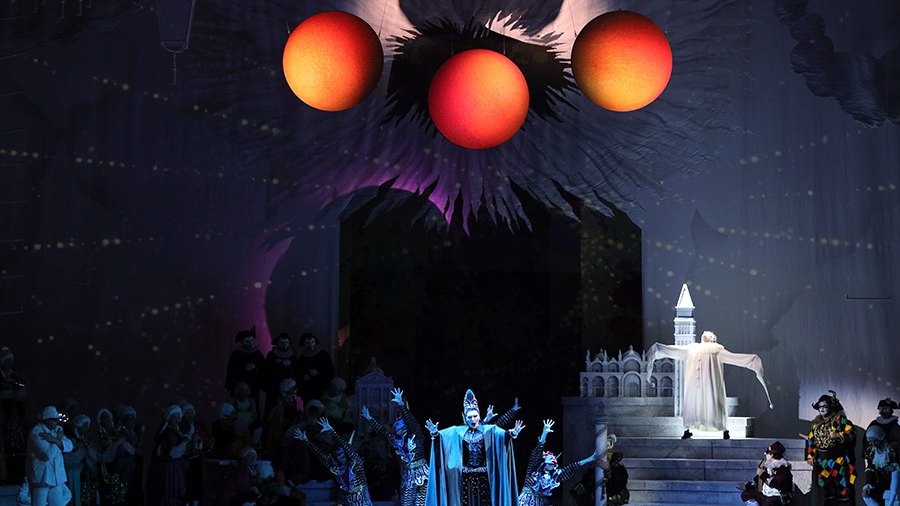Sergei Prokofiev’s satirical 1921 opera tells the fairytale story of a young prince who is cursed by a witch to fall in love with three oranges. The prince travels to far off lands in search of the citrus fruits, each of which, when peeled, contains a princess. The first two princesses die instantly when exposed to the elements. The third survives and marries the prince.
The libretto, written by the composer, is based on an Italian play (L’amore delle tre melarance) by Carlo Gozzi. The work was commissioned by the Chicago Opera Association during Prokofiev’s first trip to the United States in 1918. It was set in French, because Russian was deemed unsuitable for American audiences.
Prokofiev’s six-movement orchestral suite begins with The Ridicules. It is the swirling, buffoonish music of the opera’s prologue in which the forces of Comedy and Farce are unleashed. At moments, the music anticipates film scores of John Williams, not only in the soaring, larger-than-life climaxes, but also in the propelling horn ostinato beginning at 2:06.
The second movement, The Magician Tchelio and Fata Morgana Play Cards, delivers mounting suspense. The furious witch casts her ridiculous curse, and the Prince is swept on his journey by magic swirling winds.
At the heart of the Suite is the quirky, sarcastic March, one of Prokofiev’s most iconic miniatures. The Scherzo which follows is filled with magical spirits and splashes of color amid trumpet foreshadowings of John Williams’ Superman.
The Suite concludes with the lush, impressionistic music of The Prince and the Princess, and the exhilarating ferocity of the witch’s Flight.
Recordings
- Prokofiev: The Love of Three Oranges Suite, Op. 33, Neeme Järvi, Scottish National Orchestra
Featured Image: The Love for Three Oranges at St. Petersburg’s Mariinsky Theatre

